Abstract
In the Philippines’ vegetable production, eggplant accounts for the largest share at 248 thousand metric tons (kt), according to 2022 data. This trend has been consistent over the past few years, positioning eggplant as a very important vegetable in the country. Although other vegetables such as tomatoes, cabbage, and peppers are also important, the high production volume of eggplant indicates its important role in the Philippine food culture and agricultural production system. In terms of land use, eggplant production requires a large amount of farmland, and it is cultivated mainly in agriculturally active areas such as Central Luzon and the Visayas region. In these areas, it is common for farmers to grow eggplant as a staple crop. In addition, when it comes to tomato production, classification according to use is important, and there is a clear difference in the production volume of tomatoes for eating fresh and tomatoes for processing (for ketchup and puree). Processing tomatoes are primarily used by domestic processors and play a major role in the commercial supply chain. These data show that in the Philippines, vegetables are produced according to the characteristics of each region, and a wide variety of vegetables are produced, mainly eggplants and tomatoes.
Production (by vegetables)
A notable trend in vegetable production in the Philippines is the volume of eggplant produced. According to data from 1961 to 2022, eggplant recorded its highest production volume in 2019 at 250 thousand tonnes (kt). Since this peak, production volume has declined, and currently stands at approximately 248,000 tons, which is 99.3% of the maximum value. This indicates that eggplant remains a major vegetable crop in the Philippines, especially in its important role in food culture. Eggplant production is mainly carried out in agricultural areas of the Philippines, which has a significant impact on land use. It is particularly cultivated in agriculturally thriving areas such as Central Luzon and the Visayas region, where the climate and soil conditions are suitable for eggplant cultivation, ensuring stable production. However, in recent years, there have been some fluctuations in production volumes due to climate change and advances in agricultural technology, making it difficult to exceed the peak record. In addition to eggplant, other vegetables are also produced, with tomatoes, cabbages and peppers also being important crops. Overall, vegetable production is the backbone of Philippine agriculture and efforts are continually being made to ensure a stable supply.
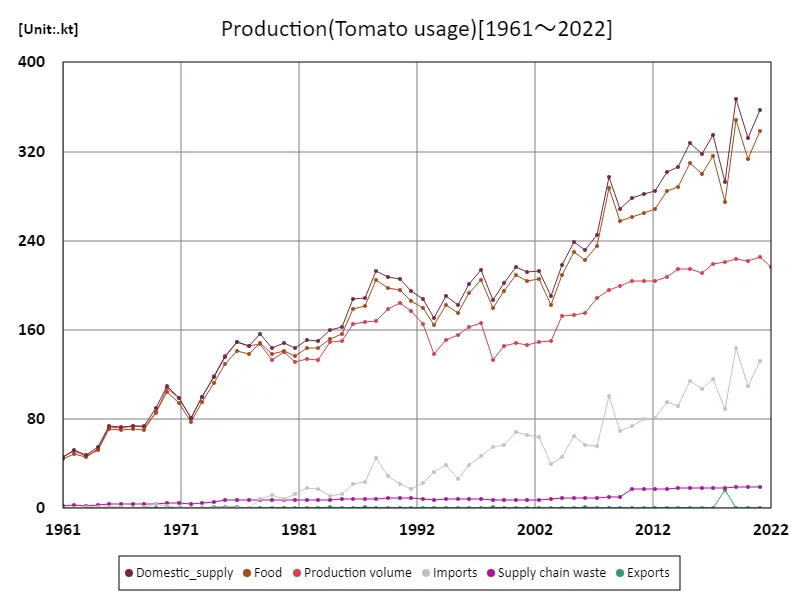

The maximum is 367kt[2019] of Domestic_supply, and the current value is about 97.3%
Yield(by vegetable)
Asparagus production in the Philippines recorded a notable peak in data from 1961 to 2022. In 2008, yield reached its highest level at 16.8 tonnes per hectare (t/ha). However, yields have since declined and are now at just 60.1% of their peak level. This decline likely reflects some of the challenges in asparagus cultivation. Asparagus is important to some farmers as a highly profitable crop, but it requires advanced techniques and suitable climatic conditions to grow. In particular, it is vulnerable to dry seasons and high temperatures, and in some parts of the Philippines, these conditions are not suitable for cultivation, making it difficult to maintain production levels. Additionally, the area in which asparagus is cultivated is limited compared to other crops, making it difficult to enjoy economies of scale, which is also a factor in the decline in yields. Furthermore, asparagus cultivation is heavily dependent on export demand, and is also affected by international market competition and price fluctuations. It is likely that a combination of these factors led to the decrease in yield. However, asparagus remains an attractive crop for some farmers, and with improvements in cultivation techniques and a review of export strategies, it is possible that production volumes may recover in the future.
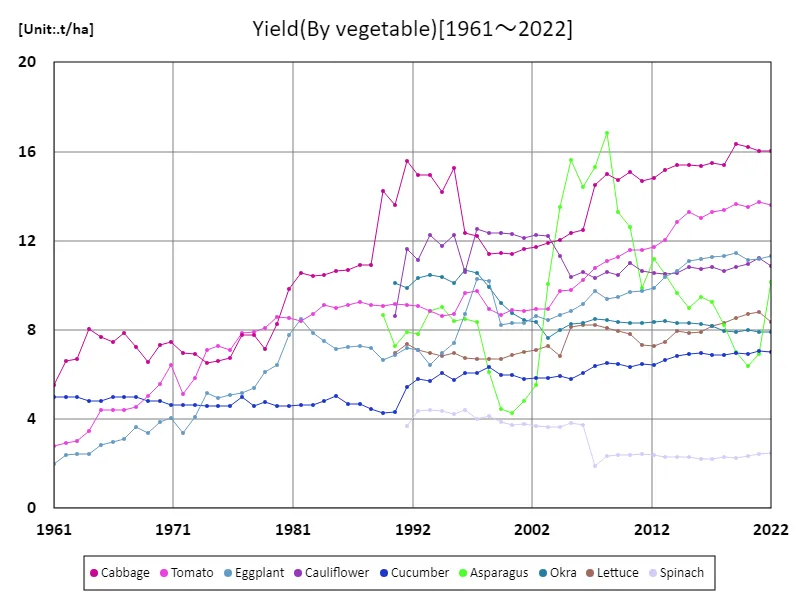

The maximum is 16.8t/ha[2008] of Asparagus, and the current value is about 60.1%
Land use (by vegetables)
Data on land use for vegetables in the Philippines highlights the area cultivated with eggplant in particular. According to data for 2022, the area under cultivation of eggplant is 22 thousand hectares (kha), making it the largest area among the total. These figures indicate that eggplant is the Philippines’ major vegetable crop, particularly in terms of domestic consumption and food culture. Eggplant cultivation is mainly carried out in agriculturally thriving areas such as Central Luzon and the Visayas region, which supports stable production. Meanwhile, the average cultivation area for the whole vegetable production reaches 5.98 thousand hectares, and the total area reaches 53.8 thousand hectares. These figures show that vegetable production in the Philippines is expanding to a certain extent, but compared to eggplant, the cultivated area for other vegetables is relatively small. In particular, other major vegetables such as tomatoes, cabbages, and peppers are also cultivated, but they are not as widely cultivated as eggplant, and it can be seen that each crop is produced in a limited area and by only a few farmers. As a trend so far, vegetable production in the Philippines has been carried out according to the characteristics of each region, and stable production has continued, focusing on eggplant. However, there is a need to address climate change and improve land use efficiency.
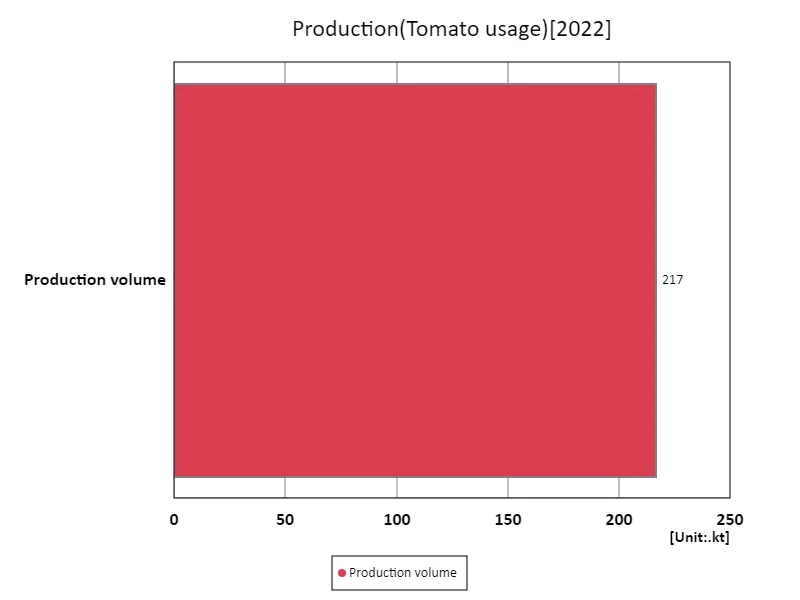

The maximum is 217kt of Production volume, the average is 217kt, and the total is 217kt
Tomato usage
Data on tomato production in the Philippines highlights the importance of domestic supplies. According to data from 1961, the maximum production volume of tomatoes was 367 thousand tons (kt), which represents the production volume required to meet domestic supply needs. This production volume reflects the essential place of tomatoes in Philippine food culture. Tomatoes are widely used in cooking and domestic consumption, especially as a basic ingredient in salads and dishes. Over the past few decades, tomato production in the Philippines has remained stable and continues to grow as domestic consumption increases. While tomatoes are in high demand for eating fresh, they are also important for processing. In particular, processed products such as ketchup, purees and sauces are supplied not only to the domestic market but also to the export market. Therefore, tomato production has a commercial dimension beyond domestic supply and plays an important role in the agricultural economy. However, in recent years, tomato production has faced certain challenges due to the effects of climate change and pests. In particular, in order to maintain price stability, it is necessary to introduce sustainable cultivation methods and improve production efficiency. Tomato production remains a cornerstone crop for Philippine agriculture, and is expected to continue to grow in the future, along with supply to the domestic market.
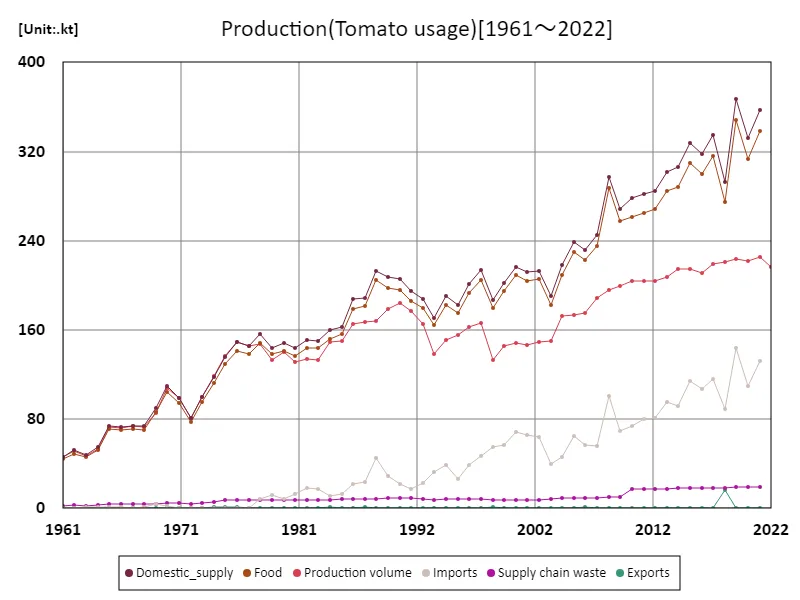

The maximum is 367kt[2019] of Domestic_supply, and the current value is about 97.3%
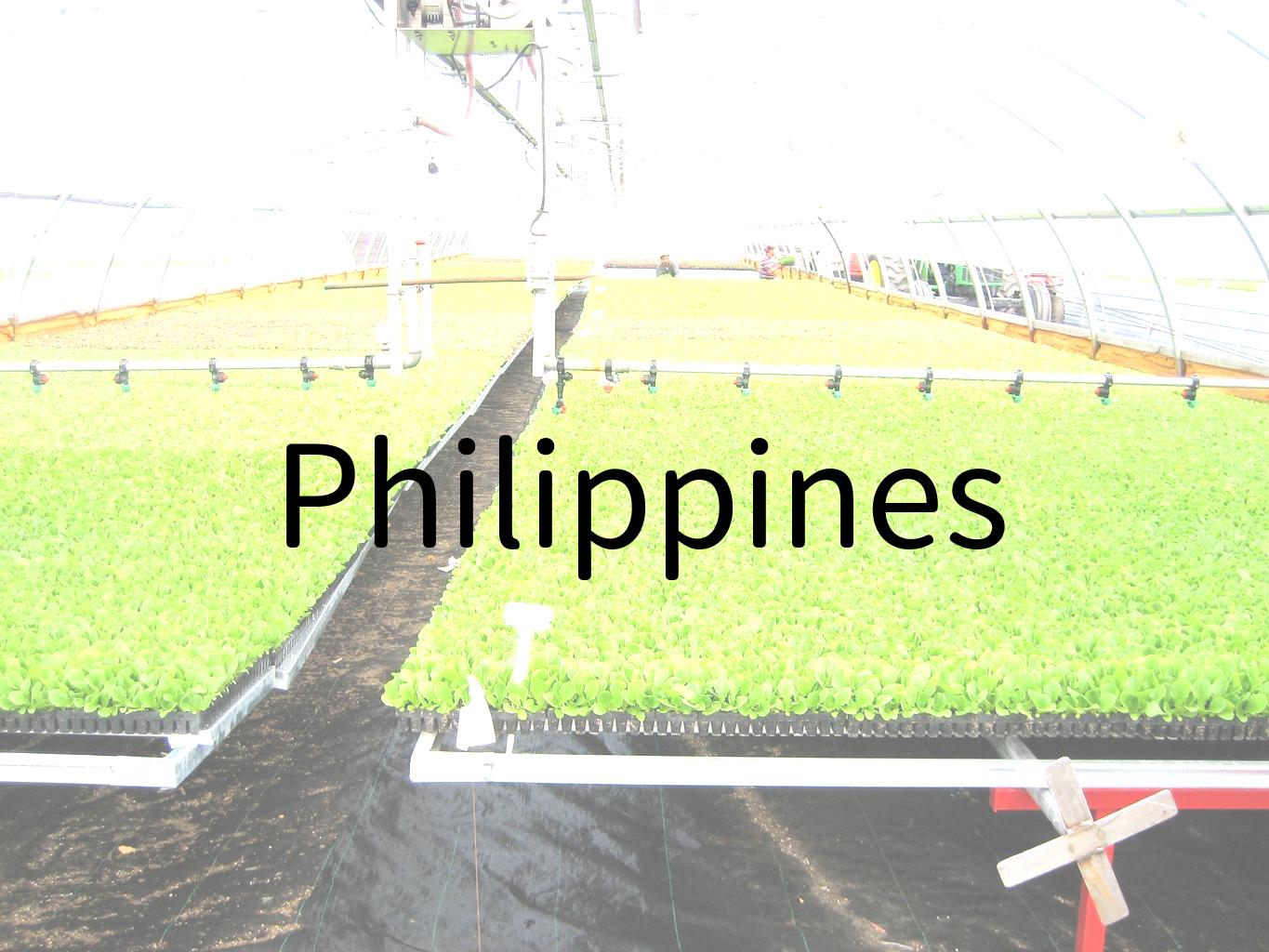


Comments